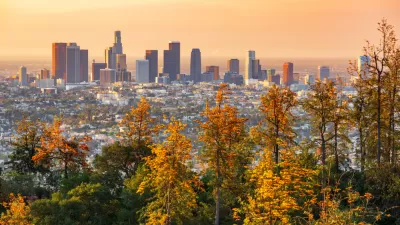Five actions governments could take quickly to reduce emissions and restore ecosystems.

As climate change poses an increasingly urgent threat, writes Zak Smith, "[t]he United States and other countries can immediately expand investment and support for natural climate solutions that provide the triple benefit of reducing emissions, taking carbon out of the atmosphere, and increasing the resiliency of the natural world." Focusing on restoration and resilience will put ecosystems "in a better position to withstand climate change impacts, which means they’ll be more likely to continue providing the foundational natural building blocks we rely upon for human life, like clean air, clean water, food security, and flood control."
Natural climate solutions, argues Smith, "provide an opportunity to bring everyone to the table. To avoid the mistakes of the past, we must include the voices of communities that have been and will be disproportionately burdened by the impacts of climate change and the industries creating our global warming nightmare."
Smith suggests five actions that can be taken immediately:
- Protect the ocean, "our best ally in combating climate change."
- Protect forests. Smith argues that because "countries in the Global North are driving some of the fastest primary forest loss in the world," they must "look beyond tree planting and protect the carbon-rich forests and trees already playing such an important role in the climate fight."
- "Embrace regenerative agriculture" and create more sustainable food systems.
- Acknowledge the importance of wetlands and take steps to protect them.
- Dedicate more land area to nature. " If we conserve enough representative ecosystems, we can reverse terrestrial biodiversity loss, limit future carbon emissions from land conversions, and bolster natural carbon removal."
FULL STORY: Five Natural Climate Solutions to Mitigate Climate Change

Alabama: Trump Terminates Settlements for Black Communities Harmed By Raw Sewage
Trump deemed the landmark civil rights agreement “illegal DEI and environmental justice policy.”

Planetizen Federal Action Tracker
A weekly monitor of how Trump’s orders and actions are impacting planners and planning in America.

Why Should We Subsidize Public Transportation?
Many public transit agencies face financial stress due to rising costs, declining fare revenue, and declining subsidies. Transit advocates must provide a strong business case for increasing public transit funding.

Understanding Road Diets
An explainer from Momentum highlights the advantages of reducing vehicle lanes in favor of more bike, transit, and pedestrian infrastructure.

New California Law Regulates Warehouse Pollution
A new law tightens building and emissions regulations for large distribution warehouses to mitigate air pollution and traffic in surrounding communities.

Phoenix Announces Opening Date for Light Rail Extension
The South Central extension will connect South Phoenix to downtown and other major hubs starting on June 7.
Urban Design for Planners 1: Software Tools
This six-course series explores essential urban design concepts using open source software and equips planners with the tools they need to participate fully in the urban design process.
Planning for Universal Design
Learn the tools for implementing Universal Design in planning regulations.
Caltrans
Smith Gee Studio
Institute for Housing and Urban Development Studies (IHS)
City of Grandview
Harvard GSD Executive Education
Toledo-Lucas County Plan Commissions
Salt Lake City
NYU Wagner Graduate School of Public Service





























